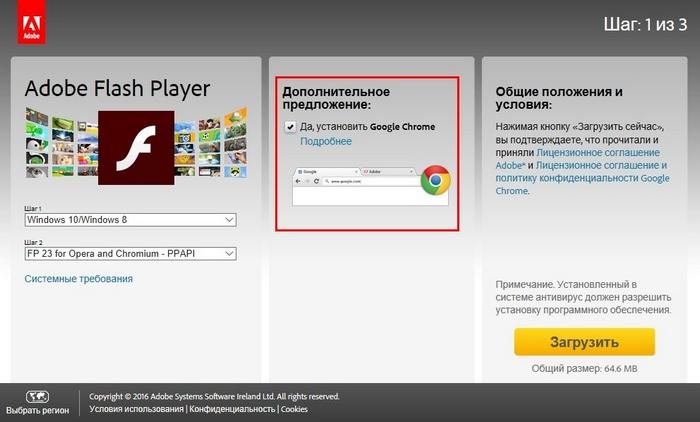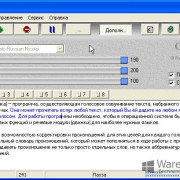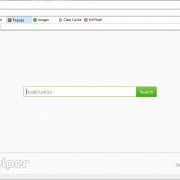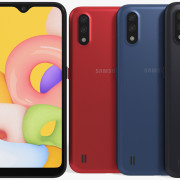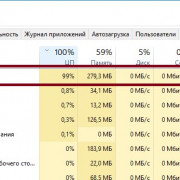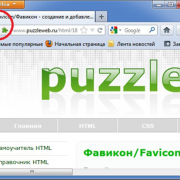Vlc media player
Содержание:
- Конвертация видеофайлов
- Deep dive on ARM cores and performance
- Audio Codecs
- Keyboard shortcuts in the Windows (DirectX) video output
- Streaming
- Обзор медиаплеера ВЛЦ
- Плеер VLC – аудио функции
- A new very fast release
- Как установить приложение, зарегистрироваться и настроить Samsung Smart TV
- June 22, 2020
- Release 0.7.1
- VLC Plugin for Firefox (Mozilla)
- Supported Formats
- HD-Discs codecs
- Video Codecs
- The Mozilla plugin
- Other control interfaces
- Интерфейс
- Плеер VLC – точная навигация
- How to associate media files with VLC
Конвертация видеофайлов

VLC удобно использовать в качестве видеоконвертера. Особенно эта возможность пригодится для файлов крупных размеров, которые неудобно конвертировать онлайн. Так, плееру по силам преобразовать целый фильм. Но стоит сказать, что этот процесс не будет быстрым.
В программе не указано, какие типы видео она принимает для конвертации. Но в качестве выходного файла вы можете выбрать такие форматы, как MP4, Webm, ASF, TS и другие. Чтоб конвертировать видео с помощью VLC, сделайте следующее:
- Нажмите «Медиа» → «Конвертировать/сохранить».
- Воспользуйтесь кнопкой «Добавить» и выберите видеофайл, который хотите конвертировать.
- Кликните «Конвертировать/сохранить».
- В списке «Профиль» найдите выходной формат.
- Нажмите «Обзор», введите имя будущего видеофайла и выберите папку для его хранения. Затем кликните «Сохранить».
- Чтобы запустить конвертацию, воспользуйтесь кнопкой «Начать».
- Дождитесь, пока временная шкала в плеере не заполнится до конца.
Deep dive on ARM cores and performance
ARM CPUs for mobile devices have an architecture with both LITTLE and big cores, which offer different speed and different power usage.
Using different types of cores allows to consume only the power you need for normal tasks, and be able to go in max power, when requested.
It is therefore extremely important to analyze the performance of our ARM code on both types of cores and when mixing it.
So let’s see have a look at how dav1d and gav1 compare on the reference AV1 sample, made by Netflix, Chimera and on the SnapDragon 821 (Pixel 1 phone):
Learnings
What we can learn from those graphs are the following:
- dav1d can decode this sample, in all the above configurations, starting from 2 threads
- gav1 is never able to decode that sample at 24fps, in LITTLE, big and big.LITTLE configurations
- threading in gav1 is catastrophic: the more threads you add, the less efficient the decoding is
- threading in dav1d is quite good: it always increases the performance, when you add more threads
- max performance is around 2.3x faster in dav1d than gav1
For 10b, the situation is even worse for gav1.
I want to emphasis on the fact that dav1d can decode Chimera with 2 threads on the Pixel 1, from 2016, using only the LITTLE cores.
Focus on LITTLE cores on Android
So, what’s interesting is to look at the LITTLE cores performance on Android to see the actual speed of the decoder, under low-power cases.
We tested here, all the threads configuration, on the following Android devices:
- Google Pixel 1 (SnapDragon 821) (2016)
- Google Pixel 2 (SnapDragon 835) (2017)
- Google Pixel 3 (SnapDragon 845) (2018)
- Xiaomi Mi 9T Pro (SnapDragon 855) (2019)
Here are the results:
Once again, we can see, on LITTLE cores:
- dav1d is always at least 2x faster than gav1
- we still see the previously mentioned threading issues on gav1
- dav1d can decode Chimera at 24fps starting with 2 threads on the LITTLE cores, gav1 cannot
AV1 10bit on LITTLE
For the sake of completeness, here are the results for 10b on the LITTLE cores:
You can find all the details here, in the spreadsheet done by Nathan.
Audio Codecs
| Name | FOURCC | Decoder | Encoder | library | Comment |
|---|---|---|---|---|---|
| MPEG-Audio 1 Layer-1/2 | mpga | Yes | Yes | libmad (decoding), twolame (encoding) | ISO/IEC MPEG |
| MP3 | mp3, .mp3, LAME | Yes | Yes | libmad (decoding), ffmpeg-mp3lame | ISO/IEC MPEG — (recompile needed for encoding) |
| AAC | mp4a | Yes | Yes | faad (decode), faac (encoding) | ISO/IEC MPEG |
| HE-AAC | Yes | untested ??? | faad (decode), libaacplus + ffmpeg (encoding) | ISO/IEC MPEG, AAC+ encoding through libaacplus + ffmpeg (patched) — untested
RECOMPILE VLC & ffmpeg for this Audio codec |
|
| AC-3 | a52, a52b | Yes | Yes | liba52 (decode), ffmpeg (encode) | |
| ATRAC | atrc | Yes | No | ||
| iLBC | ILBC, ilbc | untested ??? | untested ??? | QuickTime (decode) | (check for encoder and free decoder) |
| Mu-Law | Yes | No | ffmpeg | (check for encoder) | |
| NellyMoser | Yes | No | ffmpeg | ||
| QCELP (PureVoice) | Qclp | Yes | No? | ffmpeg | |
| Real Audio | lpcJ, 28_8, dnet, sipr, cook, atrc, raac, racp, ralf | Yes | No | Some work. Half don’t | |
| Shorten | shrn | No | No | ||
| Speex | spex | Yes | Yes | libspeex | |
| Vorbis | vorb | Yes | Yes | libvorbis | |
| DTS | dts | Yes | No | libdca | DTS-HD unsupported |
| MPC | Yes | No | libmpcdec | ||
| WMA 1/2 | wma1, wma2 | Yes | Yes, violated | ffmpeg | WMA9 is not supported |
| Flac | flac | Yes | Yes | libflac | lossless |
| Apple Lossless Audio Codec | alac | Yes | No | ffmpeg | lossless |
| Monkey’s Audio | Yes | No | lossless | ||
| Musepack | Yes | No | libmpcdec | ||
| ADMPCM (various) | Yes | Yes | ffmpeg and internal | ||
| AMR | samr | Yes | Yes | ffmpeg + libamrnb + libamrwb | RECOMPILE VLC for this Speech codec |
| Sonic | SONC | Yes | Yes | ffmpeg |
Keyboard shortcuts in the Windows (DirectX) video output
See also: QtHotkeys and How to set global hotkeys
Note: these shortcuts are only default settings and can be customized (along with many others). To tweak hotkeys settings, go to Settings->Preferences->Interface->Hotkeys settings
| F | Fullscreen |
| Space | Play/Pause |
| T | Show position (time) |
| S | Stop |
| Ctrl+Q | Quit |
| +/- | Faster/Slower |
| N/P | Next/Previous |
| Shift+Left/Shift+Right | Jump very short |
| Alt+Left/Alt+Right | Jump short |
| Ctrl+Left/Ctrl+Right | Jump medium |
| Ctrl+Alt+Left/Ctrl+Alt+Right | Jump long |
| Ctrl+Up/Ctrl+Down | Volume up/down |
| M | Mute |
| Ctrl+M | Show DVD-menu |
| Left/RightUp/DownEnter | DVD-menu navigation keys |
Streaming
Streaming using the GUI
Streaming using the GUI is only available on the Qt interface. To stream using the GUI, open VLC, then Media -> Stream:
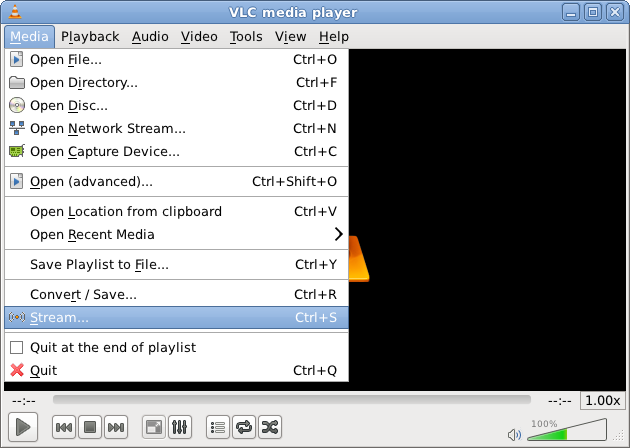 Launching the Wizard
Launching the Wizard
Select a stream (such as a file, a network stream, a disk, a capture device …) from the «Open Media» dialogs that pops up.
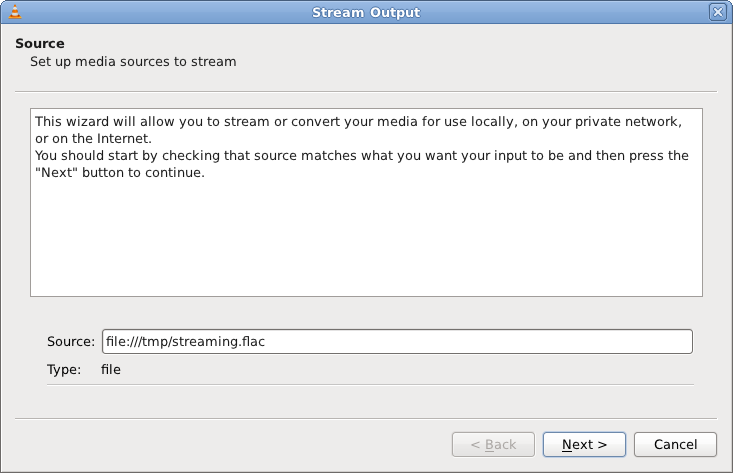 After selecting an item, the wizard is ready to begin
After selecting an item, the wizard is ready to begin
The following streaming methods are available for use with VLC:
- Display locally: display the stream on your screen. This allows you to display the stream you are actually streaming. Effects of transcoding, rescaling, etc. can be monitored locally using this function.
- File: Save the stream to a file.
- HTTP: Use the HTTP streaming method. Specify the TCP port number on which to listen.
- MS-WMSP (MMSH): This access method allows you to stream to Microsoft Windows Media Player. Specify the IP address and TCP port number on which to listen. Note: This will only work with the ASF encapsulation method.
- UDP: Stream in unicast by providing an address in the 0.0.0.0 — 223.255.255.255 range or in multicast by providing an address in the 224.0.0.0 — 239.255.255.255 range. It is also possible to stream to IPv6 addresses. Note: This will only work with the TS encapsulation method.
- RTP: Use the Real-Time Transfer Protocol. Like UDP, it can use both unicast and multicast addresses.
- IceCast: Stream to an IceCast server. Specify the address, port, mount point and authentication of the IceCast server to stream to.
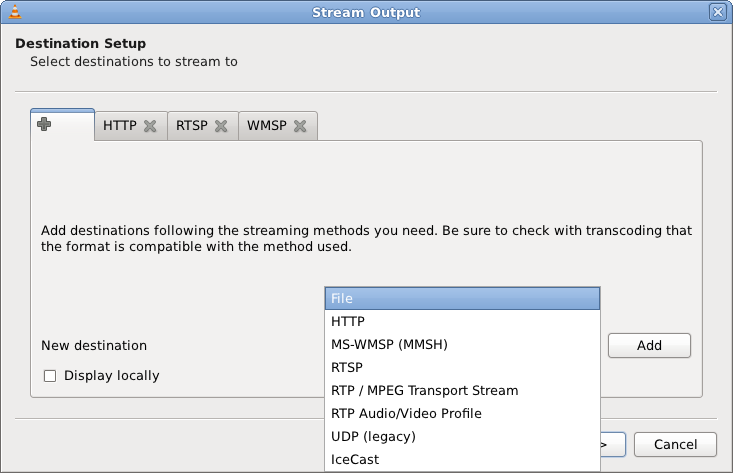 Wizard streaming method
Wizard streaming method
A few caveats:
Select a transcoding profile that fits the codecs and access method of your stream, such as MPEG-TS, MPEG-PS, MPEG-1, Ogg, Raw, ASF, AVI, MP4 and MOV. You can also create or modify profiles by clicking the «Edit selected profile» button next to the selection combobox.
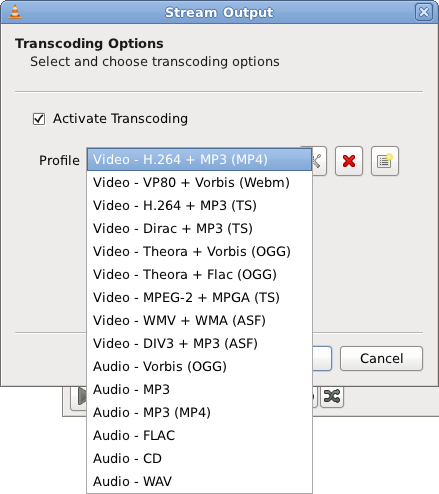 Transcoding options
Transcoding options
Select methods to announce your stream. You can use SAP (Service Announce Protocol) or SLP (Service Location Protocol). You must also specify a channel name. The macOS interface also allows you to export the description (SDP) file of a RTP session using the internal HTTP or RTSP server of VLC, or as a file. This can be done using the according checkboxes. The SDP URL text box allows to give the url or destination where the SDP file will be available. There is a text box displays the Stream Output MRL (Media Resource Locator). This is updated as you change options in the Stream output dialog, and can be tweaked by hand if necessary.
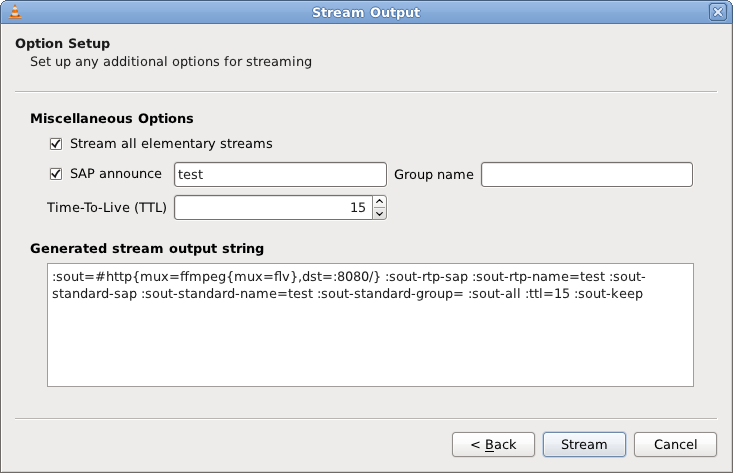 Selecting methods to announce the stream
Selecting methods to announce the stream
Click «Stream» to start streaming.
Streaming using the command line interface
See also: Documentation:Streaming HowTo/Command Line Examples
If you want to stream using the command line interface instead of the GUI (more control, for example you can specify your own container), you can «sniff» the options the GUI is using by opening up the logger (Tools menu -> message) and setting verbosity level to «2» then doing a stream. It will output debug messages that basically tell you what it is using for command line parameters, then you will take those same parameters and use them on the command line (you may need to add quotation marks around words that have spaces in them, and you may need to add —‘s).
An example is in a unique command line:
C:\Program Files\VideoLAN\VLC>vlc "C:\Users\Public\Videos\Sample Videos\Wildlife.wmv":
sout=#transcode{vcodec=h264,acodec=mp3,ab=128,channels=2,samplerate=44100}:http{dst=:8090/go.mpg}
Обзор медиаплеера ВЛЦ
Основной работой ВЛС, точнее, компонента VideoLAN Client, является воспроизведение медийных файлов и декодирование видео потоков MPEG или DVD в режиме реального времени. В то же время компонент VideoLAN Server отвечает за трансляцию потоков DVD, MPEG, Youtube видео, спутникового и другого цифрового телевидения на компьютеры, ноутбуки и другие устройства в локальной сети или Интернете онлайн.
Бесплатная программа VLC реально используется во многих проектах как сервер потокового вещания A/V контента по IPv4 и IPv6. Для записывания и просмотра видео данных нет необходимости находить, загружать и инсталлировать кодеки, достаточный минимум которых есть в проигрывателе изначально, достаточно бесплатно скачать Media Player VLC русский на свой комп или ноут. Сразу после установки ВЛЦ отлично показывает DVD и IPTV, приватные видеозаписи и множество мультимедийных файлов, а также дает возможность послушать любое Интернет радио онлайн.
Плеер VLC – аудио функции
Чтобы через плеер VLC слушать радиопередачи, транслируемые интернет-радиостанциями, нажмите комбинацию клавиш Ctrl + L. В новом окне нажмите внизу левой панели разделе Icecast Radio Directory. Приложение загружает список станций и отображает их на правой панели. Двойной щелчок на любом названии станции запустит воспроизведение.
Если Вы часто слушаете музыку с компьютера, а также воспроизводите музыку из каталога сервиса Last.fm, вы можете с помощью проигрывателя VLC «показать», записи какого стиля Вы предпочитаете. Для этого будет использоваться ваша локальная коллекция аудио.
Откройте расширенные настройки плеера (Ctrl + P) и при выборе Все, разверните раздел Интерфейс и выберите Интерфейсы управления. Установите флажок Передача информации о прослушанных песнях на на Last.fm. В текстовом поле audioscrobbler введите ваши данные пользователя сайта Last.fm и сохраните изменения. Last.fm, предлагая вам новые записи, будет учитывать стиль записей, хранящихся локально.
A new very fast release
0.7.0 is a major new release, whose focus is, once again, speed. It is doubly interesting, for improvements are important for both computers and smartphones.
The ref_mv rewrite
For once, the biggest speed improvement for desktop and laptops is not coming from writing more assembly code, but from Ronald’s rewrite of the ref_mv algorithm.
This new algo gives a 8-12% speed improvement measured on Haswell machines while reducing memory usage by 25%.
We’re talking about 10% faster for the complete AV1 decoding, that’s a more important impact than a lot of assembly we wrote.
x86 Assembly
With 0.7.0 release, the assembly for x86 CPUs (32bit and 64bit) is now totally complete for the 8bit bitdepth.
We finished up all the small optimizations that remained for SSSE3 and AVX2, notably film grain, during the 0.6.0 and 0.7.0 development cycles. We added more AVX-512 assembly, for those with very recent CPUs.
In the future, getting faster on those Intel CPU is going to be very difficult (I know I said that already many times, but this time it’s true).
Dav1d is still around 3x to 5x faster than aomdec on normal computers; but we are now even more faster :). See older posts for more information.
ARM Assembly
As for 0.6.0, an important focus of dav1d 0.7.0 was ARM assembly, and notably for the 10bitdepth cases.
As of 0.7.0, most assembly you should care about is done for 8bit/10bit/12bit on ARM64 and this makes decoding AV1 on the phones affordable.
Как установить приложение, зарегистрироваться и настроить Samsung Smart TV
Для пользования услугами компании Beeline необходимо подключить телевидение, соединиться с WiFi сетью, скачать Билайн ТВ на Смарт ТВ Самсунг и пройти регистрацию. Как это сделать правильно, рассмотрим подробнее.
Подключение
Наиболее удобный способ — подключение Beeline TV вместе с Интернетом. Для подключения услуги сделайте такие шаги:
- Проверьте наличие необходимого оборудования в вашем доме. Для этого подайте заявку на офсайте или наберите телефон 8-800-70-08-000.
- Определитесь с тарифным планом для Смарт. Для совместной услуги Интернета и телевидения доступно четыре тарифа (Фантастический МАХ, Бомбический с ТВ, Фантастический или Скоростной с ТВ).
- Выберите дополнительный пакет каналов (если необходимо).
- Оформите заявку и оплатите услугу.
Если вы подключены к другому провайдеру, настройка Билайн ТВ на Смарт ТВ Самсунг доступна без подведения кабеля. Для пользования услугой достаточно скачать приложение и зарегистрироваться. При этом пользователям доступна покупка фильмов по стоимости от 99 р за штуку, приобретение пакета Стартовый за 150 рублей или получение дополнительных пакетов (за доплату).
Соединение Смарт Samsung с WiFi
Для загрузки виджета Билайн ТВ для Samsung Smart TV необходимо наличие Вай-Фай соединения.
Общий алгоритм действий имеет такой вид:
- Подключите роутер к кабелю провайдера.
- Соедините маршрутизатор с ПК или ноутбуком для настройки.
- Войдите в любой веб-проводник и введите в адресной строке 192.168.1.1. Данные для входа можно найти на днище устройства.
- Перейдите в раздел быстрой настройки и укажите данные для Вай Фай сети (название и пароль).
- Сохраните настройки.
- Берите в руки пульт ДУ телевизора Samsung и войдите в меню.
- Перейдите в раздел Сеть, а далее — Настройки сети.
- В окне с инструкцией жмите на кнопку Далее.
- Укажите беспроводную сеть и жмите Далее.
- Из приведенного перечня выберите свой вариант.
- Введите пароль и жмите Далее.
Если все сделано правильно, на телевизоре появляется сообщение об успешно введенных настройках и подключении к Сети. Здесь расскажем как настроить тв Билайн через приставку.
Установка приложения
Перед тем как настроить Билайн ТВ на телевизоре Самсунг, необходимо скачать и установить утилиту для просмотра телевидения. Алгоритм действий следующий:
- Подключите телевизор к Интернету по принципу, который рассмотрен выше.
- Войдите в Samsung Smart TV путем нажатия кнопки Smart Hub.
- Перейдите в Samsung App и отыщите программу Билайн через поиск.
- Установите софт.
Регистрация
Перед тем как подключить Билайн ТВ к Самсунг Смарт, пройдите регистрацию. Если вы пользуйтесь мобильным номером Beeline, предоставляется 30 дней бесплатного пользования с пакетом Стартовый. При этом услуга подключается в автоматическом режиме. При регистрации по почтовому ящику для получения бесплатной услуги требуется ввод данных с банковской карты. Активация бесплатного периода закрыта для устройств на iOS.
Особенности регистрации:
- Для мобильных абонентов Beeline — по телефонному номеру. После указания мобильного на смартфон приходит сообщение с ПИН-кодом. Также доступна регистрация с применением пароля от Личного кабинета.
- При пользовании услугами других мобильных операторов — по адресу e-mail. После ввода данных приходит письмо с одноразовым PIN кодом.
- Для абонентов плана Все в одном регистрация проходит по телефону или номеру договора с компанией. После указания данных поступает сообщение с ПИН-кодом. Также доступна регистрация с помощью пароля в личном кабинете.
- В случае подключения услуги Домашнего Интернета и телевидения можно зарегистрироваться по номеру договора или через личный кабинет. Если нужно сменить приставку — об этом тут.
June 22, 2020
dav1d 0.7.1
Jean-Baptiste Kempf
Release 0.7.1
We just did a small release of dav1d called 0.7.1, just one month after 0.7.0.
It is a quick release that fixes a couple of bugs and that does more optimizations on ARM32 and SSE2.
ARM 32-bit
After spending a lot of time on ARM64 during 0.5.0 and 0.7.0, we’re spending some times for the people who are stuck with older phones, still running on 32-bit platforms.
With these new optimizations, we’re 28% faster than before when decoding the Chimera sample on a Snapdragon 835.
The result is that we’re only 20%-25% slower in 32bit compared to 64bit, which is quite a feast.
Compared to gav1, we’re now 2x-2.4x faster, in 32bit mode.
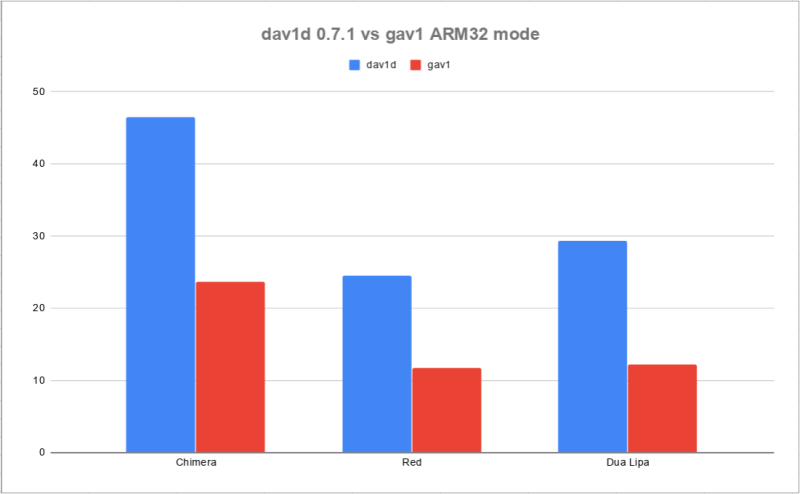
When comparing with numerous threading options, on a Galaxy S5, from 2014, we can see the following:

With dav1d 0.7.1, we’re able to decode the AV1 Chimera 1080p sample at more than 24 fps on a Galaxy S5 from 2014 on Android (32-bit)!
Reaching 24fps does not even use the full CPU!Once again, we see that the gav1 library has issues with threading.
Desktop
On the desktop, we did some SSE2 optimizations, for the people who don’t have SSSE3 CPU, which should see quite a bump in decoding.
We also did optimizations for the scaled mode, in AVX2. (This is used only by bitstreams that use the spatial scalability feature).
PS: thanks again to Nathan for the graphs.
VLC Plugin for Firefox (Mozilla)
See also: Plugins/Mozilla
Install
There are at least two ways to install the VLC Mozilla Plugin. One way is to to check the «Install Firefox Plugin» when you install VLC.
If the standard exe installation does not install the mozilla plugin directory, then download zip version which includes the required data, and continue with the next installation (2nd way of installing of the plugin)
The second way involves several steps:
- Quit Firefox or Mozilla
- Copy the two files in (usually ) to your mozilla plugins directory (Usually or ).
- Restart Firefox or Mozilla
Use the Mozilla plugin
If in the browser you open a link to an audio or video URL handled by the VLC plugin, or if a web page has HTML code that embeds audio or video handled by the VLC plugin, then the plugin should start and play the audio/video.
Note the plugin (as of version 1.1.9) does not present any user interface — it has no default control panel and no keyboard shortcuts.
To get the list of the media types handled by the VLC plugin, browse to about:plugins.
Conflicts will arise if you have more than one plugin installed that supports the same media type.
See the Web plugin documentation to create HTML pages that use JavaScript to control the plugin.
Supported Formats
VIDEO : MPEG-1/2, DivX (1/2/3/4/5/6), MPEG-4 ASP, XviD, 3ivX D4, H.261, H.263 / H.263i, H.264 / MPEG-4 AVC, Cinepak, Theora, Dirac / VC-2, MJPEG (A/B), WMV 1/2, WMV 3 / WMV-9 / VC-1, Sorenson 1/3, DV, On2 VP3/VP5/VP6, Indeo Video v3 (IV32), Real Video (1/2/3/4), VOB.
AUDIO : MPEG Layer 1/2, MP3 – MPEG Layer 3, AAC – MPEG-4 part3, Vorbis, AC3 – A/52, E-AC-3, MLP / TrueHD>3, DTS, WMA 1/2, WMA 3, FLAC, ALAC, Speex, Musepack / MPC, ATRAC 3, Wavpack, Mod, TrueAudio, APE, Real Audio, Alaw/µlaw, AMR (3GPP), MIDI, LPCM, ADPCM, QCELP, DV Audio, QDM2/QDMC, MACE.
Others : DVD, Text files (MicroDVD, SubRIP, SubViewer, SSA1-5, SAMI, VPlayer), Closed captions, Vobsub, Universal Subtitle Format (USF), SVCD / CVD, DVB, OGM, CMML, Kate. ID3 tags, APEv2, Vorbis comment.
HD-Discs codecs
- Transcluded from HD-Discs codecs
| Codec | VLC 1.0 | VLC 1.1 | VLC 1.2 | VLC 3.0.6 | Remarks |
|---|---|---|---|---|---|
| H.264 | Yes | Yes | Yes | GPU acceleration recommendedVLC DxVA2 or VLC VAAPI. | |
| VC-1 | Partial | Partial | Partial | VC-1 Interlaced isn’t ready | |
| MPEG-2 | Yes | Yes | Yes | FFmpeg or libmpeg2 | |
| EAC3 | Yes | Yes | Yes | FFmpeg, libavcodec > 52.0 | |
| TrueHD | Yes | Yes | Yes | FFmpeg, libavcodec > 52.40 | |
| DTS Core | Yes | Yes | Yes | libdca or FFmpeg | |
| DTS-HD Master Audio | No | No | No | Core is played | |
| Blu-Ray Subtitles | No | Yes, libavcodec > 52.40 | Yes | FFmpeg | |
| HD-DVD Subtitles | No | No | No | ||
| HD-DVD Files (.evo) | No | No | No | ||
| Blu-Ray folders | Partial | Partial | Partial | ||
| Discs | No | No | Partial |
Video Codecs
Widely Used Video Codecs
| Name | FOURCC | Playable | Encoder | library | Comment |
|---|---|---|---|---|---|
| MPEG-1 Part 2 | mpeg, mp1v, mpg1, PIM1 | Yes | Yes | libmpeg2 , ffmpeg | |
| MPEG-2 Part 2 | mp2v, mpg2, vcr2, hdv1, hdv2, hdv3, mx*n, mx*p | Yes | Yes | libmpeg2 , ffmpeg | |
| MJPEG (A/B) | Yes | Yes | ffmpeg | ||
| Divx (1, 2, 3) | DIV1, DIV2, DIV3, mp41, mp42, MPG4, MPG3 | Yes | Yes | ffmpeg | |
| DivX 4, 5, 6 , 3ivx D4, MPEG-4 | DIV4, DIV5, DIV6, col1, col0, 3ivd | Yes | Yes | ffmpeg | |
| MPEG-4 Part 2 (AVP), Xvid | DIVX, Xvid, mp4s, m4s2, xvid, mp4v, fmp4, 3iv2, smp4, … | Yes | Yes | ffmpeg | |
| H.261 | h261 | Yes | Yes | ffmpeg | |
| H.262 | h262 | Yes | Yes | ffmpeg | Same as MPEG-2 Video |
| H.263 / H.263i | h263 | Yes | Yes | ffmpeg | |
| H.264 / X.264
(MPEG-4/AVC) |
h264, s264, AVC1, DAVC, H264, X264, VSSH | Yes | Yes | ffmpeg (decode), x264 (encode) | |
| Sorenson 1 (Quicktime) | SVQ 1 | Yes | Yes | ffmpeg | |
| Sorenson 3 (Quicktime) | SVQ 3 | Yes | No | ffmpeg | |
| DV | Yes | Yes | ffmpeg | ||
| Cinepak | cvid | Yes | No | internal, ffmpeg | |
| Theora | thra | Yes | Yes, violated | libtheora | |
| WMV 1/2 (7/8) | wmv1, wmv2 | Yes | Yes | ffmepg | |
| WMV 3 / WMV-9 / VC-1 | wmv3, wvc1, wmva | Yes | No | ffmpeg | Not all profiles are supported. See DMO. |
| On2 VP3, | VP31, VP30, VP3 | Yes | No | ffmpeg | |
| On2 VP5 | VP50, VP5, VP51 | Yes | No | ffmpeg | |
| On2 VP6 (used by FLV) | VP60, VP61, VP62, VP6F, VP6A | Yes | Yes | ffmpeg | |
| On2 VP7 | VP7 | No | No | ||
| Flash Screen Video | FSV1 | Yes | Yes | ffmpeg | |
| Indeo Video 3 | IV31, IV32 | Yes | No | ffmpeg | |
| Indeo Video 4/5 | IV41, IV51 | Yes | No | libavcodec | |
| Real Video 1.0, 1.3, 2.0 | RV10, RV13, RV20 | Yes | Yes | ffmpeg | |
| Real Video 3.0, 4.0 | RV30, RV40 | No | No | ||
| Dirac | BBCD | Yes | Yes | dirac | |
| Huffyuv / |
Yes | Yes | ffmpeg |
Rarer Video Codecs
| Rare codecs | FOURCC | Decoder | Encoder | library | Comment |
|---|---|---|---|---|---|
| Apple Animation, Graphics, Video, QuickDraw | ‘rle’,’smc ‘,’rpza’, ‘qdrw’ | Yes | No | ffmpeg | |
| SheerVideo | No | No | Professional use, no open source decoders | ||
| CorePNG | ?? | ?? | |||
| MSU Lossless | ?? | ?? | |||
| Snow | Yes | Yes | |||
| Pixlet | ?? | ?? | |||
| Rare codecs (Asus V1, Asus V2) | ASV1, ASV2 | Yes | Yes | ffmpeg | |
| Game Codecs (Some) | Yes | No | ffmpeg | ||
| Tarkin | No | No | |||
| QPEG | QPEG | Yes | untested ??? | ffmpeg |
The Mozilla plugin
Install the plugin
GNU/Linux Debian, Ubuntu, etc.
Install the mozilla-plugin-vlc package using your preferred package manager. For example, at the command line enter:
# apt-get update # apt-get install mozilla-plugin-vlc
Windows
Quit Firefox or Mozilla.
Select the Mozilla Plugin option when installing VLC Media Player. The installer will then automatically detect your browser and install the plugin.
Restart Firefox or Mozilla.
Manual Install
Create the directory if it doesn’t exist.
Folders to copy:
- osdmenu
- plugins
Files to copy:
- vlc.exe
- vlc.exe.manifest
- vlc-cache-gen.exe
- npvlc.dll.manifest
- npvlc.dll
- libvlccore.dll
- libvlc.dll
- libvlc.dll.manifest
- axvlc.dll
- axvlc.dll.manifest
macOS
The Mozilla/Safari plugin for macOS is only available from vlc version 0.8.5.1 and onwards.
Quit Safari browser.
Run the installer from the dmg image.
Compile the sources yourself
Use the Mozilla plugin
If in the browser you open a link to an audio or video URL handled by the VLC plugin, or if a web page has HTML code that embeds audio or video handled by the VLC plugin, then the plugin should start and play the audio/video.
Note the plugin (as of version 1.1.9) does not present any user interface — it has no default control panel and no keyboard shortcuts.
To get the list of the media types handled by the VLC plugin, browse to about:plugins.
Conflicts will arise if you have more than one plugin installed that supports the same media type.
See the Web plugin documentation to create HTML pages that use JavaScript to control the plugin.
Other control interfaces
VLC includes a number of so-called interfaces that are not really interfaces, but means of. Nevertheless, they are enabled by setting them as interface or extra interface, either in the Preferences, in General/Interface, or using -I or —extraintf on the command line.
Hotkeys
This module allows you to control VLC and playback via hotkeys. It is always enabled by default. You can use hotkeys in the video output window, you can’t in the audio dummy interface.
Hotkeys can be hacked by:
% vlc --key-<function> <code>
Code is composed by modifiers keys (Alt, Shift, Ctrl, Meta,Command) separated by a dash (-) and terminated by a key (a…z, +, =, -, ‘,’, +, <, >, `, /, ;, ‘, \, , *, Left, Right, Up, Down, Space, Enter, F1…F12, Home, End, Menu, Esc, Page Up, Page Down, Tab, Backspace, Mouse Wheel Up and Mouse Wheel Down). Main controls are available from hotkeys, such as : fullscreen, play-pause, faster, slower, next, prev, stop, quit, vol-up, etc. (use the —longhelp option for full list of functions). For example, for binding fullscreen to Ctrl-f, run:
% vlc --key-fullscreen 'Ctrl-f'
The list of the default hotkeys is available here.
RC and RTCI
These two interfaces allow you to control VLC from a command shell (possibly using a remote connexion or a Unix socket).
Start VLC with -I rc or —extraintf rc. When you get the Remote control interface initialized, `h’ for help message, press h and Enter to get help about available commands.
To be able to remote connect to your VLC using a TCP socket (telnet-like connexion), use —rc-host your_host:port. Then, by connecting (using telnet or netcat) to the host on the given port, you will get the command shell.
To use a UNIX socket (local socket, this does not work for Windows), use —rc-unix /path/to/socket. Commands can then be passed using this UNIX socket.
The RTCI interface gives you more advanced options, such as marquee control for the marquee subpicture filter (See filter section).
Ncurses
This is a text interface, using ncurses library.
Start VLC with -I ncurses or —extraintf ncurses.
The ncurses interface
Press h to get the list of all available commands, with a short description.
There is also a filebrowser available for the ncurses interface in order to add playlist items. Press ‘B’ to use it.
The ncurses filebrowser
You can set the filebrowser starting point by launching vlc with the —browse-dir option:
% vlc -I ncurses --browse-dir /filebrowser/starting/point/
Интерфейс
Изначально графический интерфейс VLC базировался на wxWidgets, однако из-за многочисленных проблем, связанных с этим инструментарием, разработчиками было принято решение перейти на использование 4 для графического интерфейса. Некоторое время можно было выбирать между этими двумя инструментариями, однако в данный момент интерфейс на wxWidgets полностью исключён.
Рождественский интерфейс медиапроигрывателя VLC
VLC поддерживает скины через skins2 интерфейс, через него реализована поддержка скинов Winamp 2 и XMMS. Однако VLC не поддерживает напрямую скины для Winamp Classic.
Для пользователей, использующих терминал, реализован интерфейс на ncurses.
Также существуют интерфейсы, использующие telnet и HTTP (AJAX), специально для удалённого управления программой.
VLC плеер включает в себя ActiveX-компонент, который может быть встроен в другое приложение (например, Internet Explorer), и плагин для Mozilla Firefox.
Плеер VLC – точная навигация
Создать скриншот в конкретный момент фильма нелегко. В конце концов, в одной секунде воспроизведения несколько десятков кадров (в зависимости от стандарта записи материала). Нажатие клавиши PrintScreen в нужный момент может быть проблематичным.
Плеер VLC имеет для этого специальную функцию. Остановите воспроизведение видео в нужный момент, щелкните изображение правой кнопкой мыши и выберите в контекстном меню команду Видео → Сделать снимок. По умолчанию изображение будет сохранено в системной папке Изображения.
При использовании функции захвата кадра видео и сохранение его в виде графического файла очень удобен механизм высокоточной навигации для конкретного кадра материала. Запустите воспроизведение и нажимайте на кнопку Кадр за кадром.
Каждое последующее её нажатие перемещает видео на один кадр.
Переход к определенному месту в фильме – эта опция полезна, особенно при воспроизведении длинных материалов, просмотр которых Вы по каким-то причинам остановили. Позволяет в случае возобновления воспроизведения сразу вернуться к месту, в котором в прошлый раз остановились. После загрузки файла нажмите клавиши Ctrl + T, в поле окна Переход по времени введите время, в которое было приостановлено воспроизведение. VLC возобновит фильм с этого места.
Пауза при сворачивании интерфейса. Вы воспроизводите фильм, а одновременно в фоновом режиме работает клиент электронной почты или обмена мгновенными сообщениями? Вы можете быстро отреагировать на новое сообщение, без необходимости сдвига видео по времени и минимизации окна VLC. Сворачивание окна плеера будет сразу ставить воспроизведение на паузу.
В настройках программы (Ctrl + P), на вкладке Интерфейс, установите флажок Пауза при сворачивании. Нажмите кнопку Сохранить.
How to associate media files with VLC
See also:
This should be done through the VLC settings interface, choose «Tools | Preferences » and then click on the «Set up Associations…» button.
Select any file extension that you wish to open with VLC, then click «Apply». This should change all media files icons to the VLC cone, and double-clicking any of them should open VLC and immediately start playing the media.
If this seems to have no effect on the UI, and/or double-clicking the file icon does not start VLC, check that you have correctly set Windows preferences through «Start | Default Programs» (on Vista; see the relevant item on Windows XP or newer Windows OS; possibly this is not applicable to Windows 2000).
In that UI click on «Set default programs», select the «VLC media player» item and check the description (it will usually say «All default settings for this program are active»). Then choose your own course of actions by either clicking on «Set this program as default» or «Choose default settings for this program».
Other ways to achieve the same effects are as follows (not really recommended).
- In Windows Explorer, right-click a file you wish to open.
- Click «Open With» in the context menu that pops up.
- Click «VLC media player» to use VLC just this once, or click «Default program…»
- Click the name of the program (VLC) which you want to be used to open the file.
Alternatively:
- In Windows Explorer, right-click the file you want to open with VLC.
- Click Properties in the context menu that pops up.
- On the General tab, click Change.
- Click the name of the program (VLC) which you want to be used to open the file.
Either of these options affects all files that have the same filename extension (the letters after the filename’s period) as the file you selected. For example, if you change the program that opens goober.avi, then all .avi files will be opened with VLC.
Rerun the installer
- Reinstall VLC and choose the «associate files» option when it comes up. Please note that on Vista and newer systems this will not cure the ‘Windows Media Player won’t go away’ symptom, and you should go the «Set default program» route instead, as described above.
Edit the registry
Warning: this instruction set is outdated and should not be used. Direct registry editing should be avoided anyway unless you’re desperate and you really really know what you’re doing.
Warning: use this technique only if you really know what you are doing! And be sure to back-up your registry first.
- Open a text editor, like Notepad (but not WordPad).
- Copy this text below.
- Modify the strings to match your VLC installation.
- Save as vlc.reg.
- Execute vlc.reg (adding this data to your registry).
- Enjoy VLC 🙂
Text to copy:
Windows Registry Editor Version 5.00 @="VlcFile" @="VlcFile" @="VlcFile" @="VlcFile" @="VlcFile" @="VlcFile" @="VlcFile" @="VlcFile" @="VLC File" @="C:\\Program Files\\VideoLAN\\VLC\\vlc.exe,0" @="C:\\Program Files\\VideoLAN\\VLC\\vlc.exe \"%L\""
Note: This associates asf, asx, avi, divx, mpeg, mpg, vob and wmv files. If you get the idea, you can associate any file you want.






